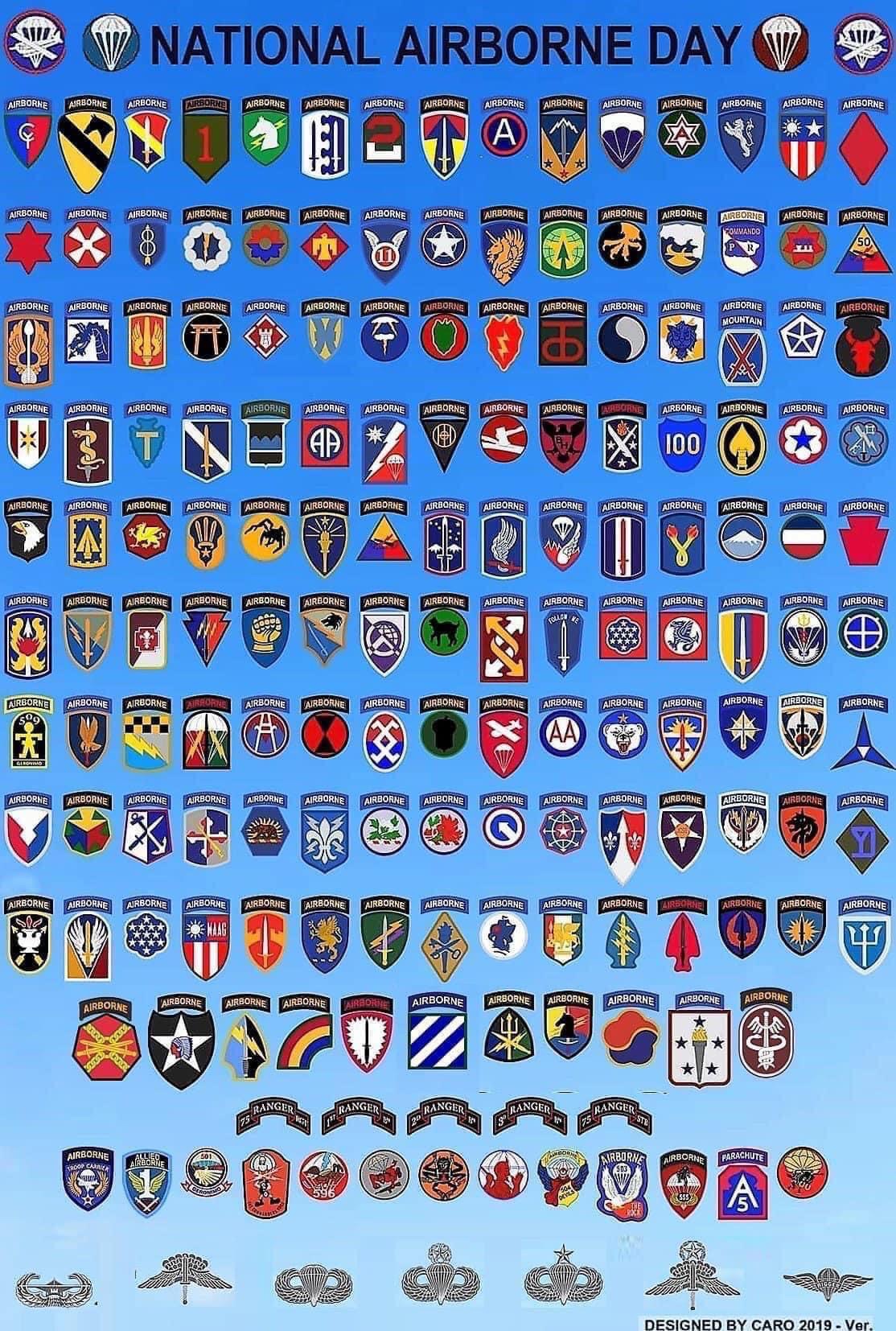

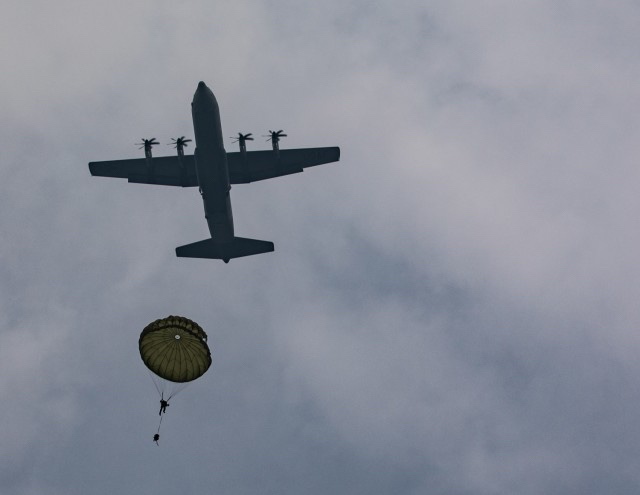
BATURAJA, Indonesia — Paratroopers from 11th Infantry Division (Airborne), Tentara Nasional Indonesia and Japan Ground Self-Defense Force conducted trilateral airborne operations with the 36th Airlift Squadron during exercise Super Garuda Airborne 2022 in Baturaja, Indonesia on Aug. 3, 2022.
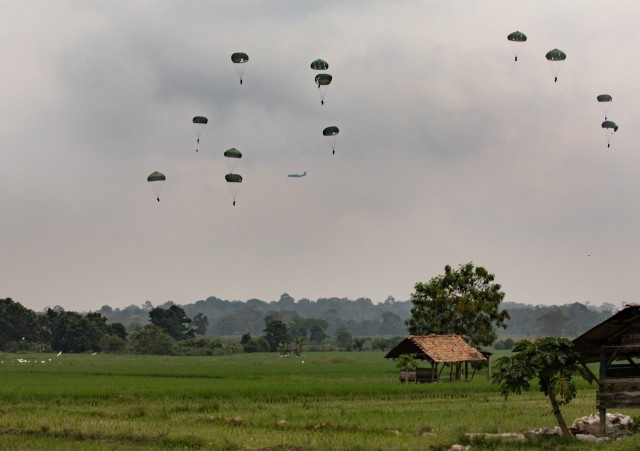
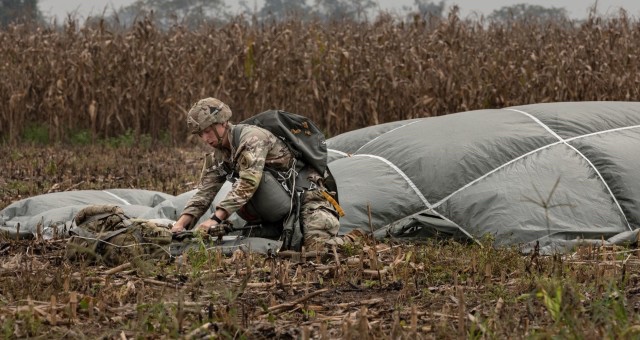
The operation is the kick-off event for Super Garuda Shield 2022. Part of Operation Pathways, Garuda Shield is a longstanding annual, bilateral military exercise conducted between the U.S. military and Indonesia National Armed Forces. The exercise reinforces the U.S. commitments to allies and regional partners, ensures joint readiness and bolsters interoperability to fight and win together.
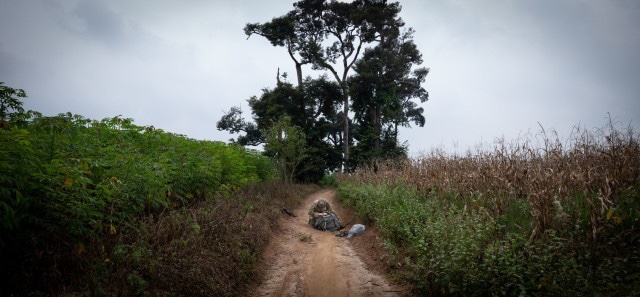
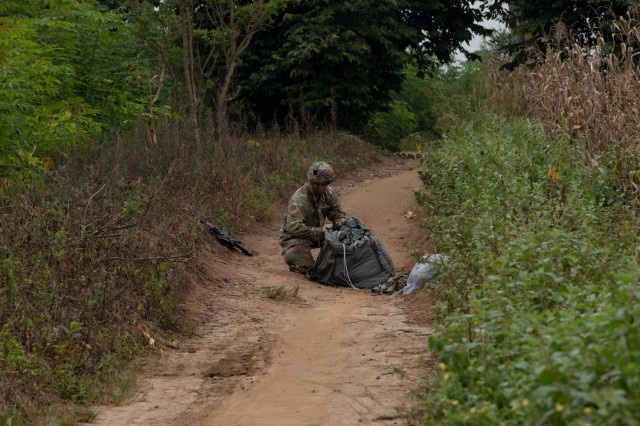
The 2022 Garuda Shield exercise is significantly larger in scope and scale than previous exercises. Service members from Indonesia and the United States will be joined this year by those from Australia, Japan and Singapore. In addition to the active participants, Canada, France, India, Malaysia, the Republic of Korea, Papua New Guinea, Timor Leste and the United Kingdom are expected to join Super Garuda Shield as observer nations.
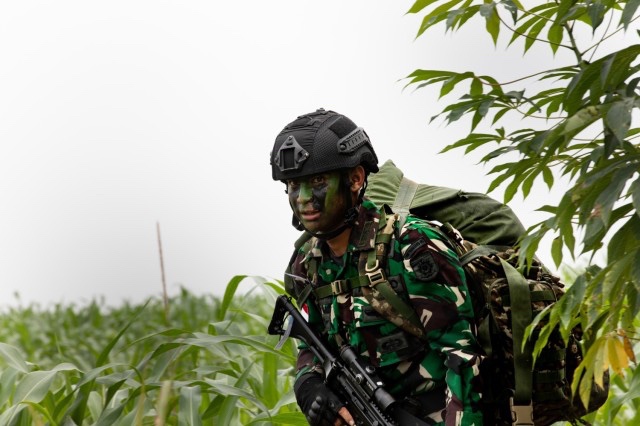
“We were really focusing on partnership,” said Lt. Col. Ben Wisnioski, assistant Army attaché, U.S. Defense Attaché Office Jakarta, Indonesia. “We focused on training, working with each other, and building significant rapport.”

Hundreds of distinguished visitors including Gen. Charles Flynn, commanding general of U.S. Army Pacific, watched as over 200 paratroopers jumped into the fields and dense tropical forests of Baturaja.
“It was the softest landing I’ve ever had,” said Wisnioski with a smile, as he pointed at his uniform, doused in thick mud.

The paratroopers then completed an airborne seizure, navigating through narrow bridges, marshes, and dense foliage to reach their objectives.

Following the parachute portion of the operation, representatives from the three armies participated in a wing exchange ceremony. Gen. Andika Perkasa, commander, Tentara Nasional Indonesia, and Lt. Gen. Kuzuki Ushijima, command chief of staff, Japan Ground Self-Defense Force, pinned wings onto six U.S. Army paratroopers.

“We’re here for a free and open Indo-Pacific,” said Sgt. 1st Class Eric Green, 2nd Platoon, Apache Company, 1st Battalion, 501st Infantry Regiment, 11th Infantry Division (Airborne). “We’re just here to let our partners know we’re here to help. I wouldn’t want to be anywhere else.”

In addition to the ceremony Soldiers from the United States, Tentara Nasional Indonesia and Australian Army, showcased weapon systems to the senior leaders and distinguished visitors.

Sgt. Alexander Clarke, mortarman with 2nd Battalion, 35th Infantry Division, explained the functions and capabilities of the M224, 60mm Lightweight Company Mortar System.

“It’s just breaking down our capabilities and what makes them the best that we’ve got,” said Clarke. “I think we’re super grateful to be able to train alongside the [Tentara Nasional Indonesia] and get to know them better. It builds that cohesion.”

Super Garuda Shield provides opportunities for Department of Defense experimentation and joint collaboration. The exercise increases readiness of both for all participating nations. With focus on specific tasks, tactics and procedures to conduct combined arms maneuver, air assault, aviation and mission command.

By SGT Nicholle Salvatierra

CPS prides itself on being an organization of collaboration and passion. Being a member of our team offers the opportunity to contribute in a meaningful way, the opportunity to challenge yourself and learn new things. From design to manufacturing, to tactical to training, at CPS you will work with the world’s most talented and seasoned team.
CPS is a company that goes Above and Beyond in every sense.
• Competitive Pay
• Medical
• Dental
• Vision
• Life
• 401k
• PTO
• Education Reimbursement
• Generous Holiday Schedule
• Family Culture Work Environment
Visit www.cpsworld.com/employment for openings.
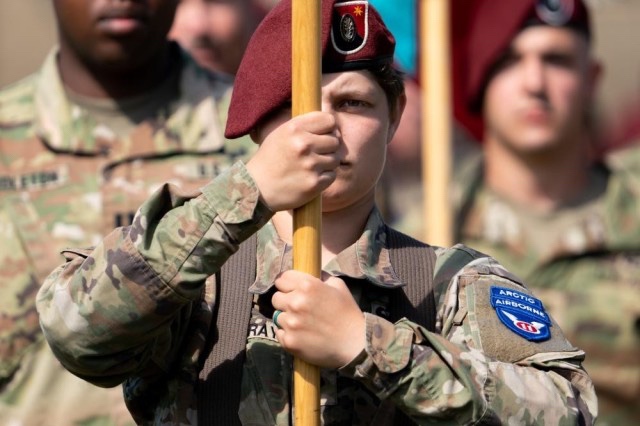
FORT WAINWRIGHT, Alaska – Several hundred Soldiers gathered in formation within the Alaskan Interior on a bright June morning Monday to take part in the activation of the 11th Airborne Division, posturing U.S. forces for strategic advantage in the harsh Arctic terrain.
The 11th Airborne Division unites about 12,000 Soldiers in Alaska under one flag, marking the first time that the Army has activated an airborne division in 70 years. During flag ceremonies Monday at Fort Wainwright and Joint Base Elmendorf-Richardson, shortened as JBER, the Army also re-designated the 1st Stryker Brigade Combat Team and the 4th Infantry Brigade Combat Team, formerly of the 25th Infantry Division, into the 1st and 2nd Infantry Brigade Combat Teams of the 11th Airborne, respectively.
The activation reaffirms the Army’s commitment to its recently announced Arctic Strategy, which outlines the service’s plan to equip, organize and train with partner units to establish military dominance in the region. The division will be headquartered at JBER and members will wear the unit’s distinctive blue patch with a red and white emblem with angel wings to symbolize the unit’s call sign, “Angels.”
“Wherever you go, you will be the most highly trained, disciplined and fit Arctic warfighting unit in the world; ready to fight and win,” Army Chief of Staff, Gen. James C. McConville said to Soldiers at Fort Wainwright. “That is what you will do. That is who you are. We are counting on you.”
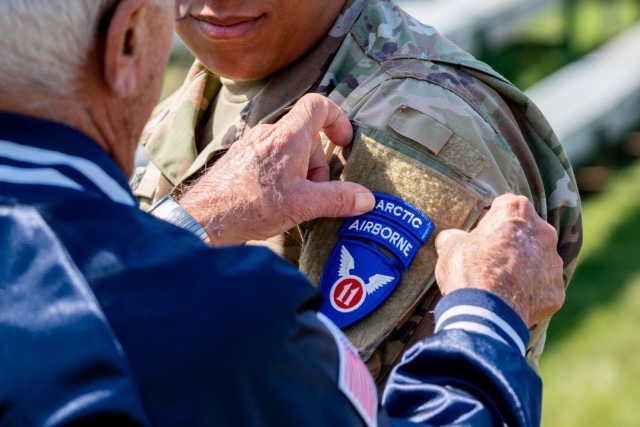
(Photo Credit: Photo by U.S. Air Force Senior Airman Patrick Sullivan)
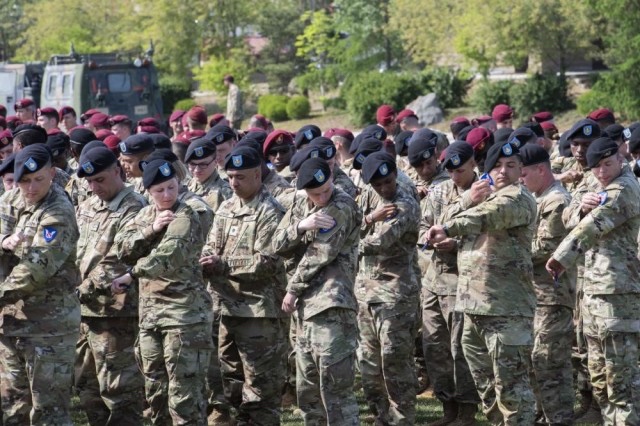
The activation also serves another purpose. By uniting the Army units as one airborne unit, Army leaders hope the activation can ignite a greater a sense of camaraderie and enthusiasm for Soldiers serving in one of the U.S. military’s most remote and desolate locations.
In recent months, the Army’s senior leaders have met with commanders at Alaskan installations to address quality of life concerns of Soldiers. Assessments revealed that the previous unit designations did not support unit cohesion.
“Experience has told us that units that have a common unit identity is a source of pride,” McConville said during a meeting with reporters. “It’s extremely important. And the history of a unit and the patch matter.”
McConville said the Soldiers of the 11th Airborne Division will be equipped with cold weather gear within the next 1 to 2 years. He added that the unit will serve as the Army’s leading experts for Arctic military operations.
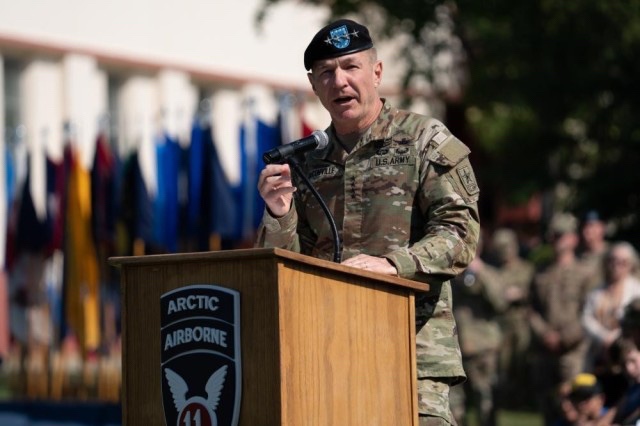
McConville said that the Stryker Brigade Combat Team based at Fort Wainwright will transition to become a more mobile, infantry-based brigade combat team bolstered with a stronger air assault capability and the skills to maneuver effectively in extreme cold weather environments.
McConville added that the Army plans to move the armored Strykers out of Alaska by the end of the summer as it continues the acquisition process of Cold Weather, All-Terrain Vehicles or CATVs.
The 11th Airborne Division originally played a critical role during World War II and the Vietnam War. The Army credits the unit with the amphibious assault landing at Luzon, Philippines, and eventually helped secure the liberation of Manila from Japanese forces.
“The 11th Airborne Division has a storied history of valor during World War II in the Pacific and also has a proud history of innovation,” McConville said. “So we expect them to live up to the legacy … We expect them to be masters of their craft in Arctic warfighting and extreme cold weather and high altitude and terrain. We expect them to develop innovative ways of operating in this environment.”
The Army now has a strategically located unit that can quickly deploy to any region, especially those in cold weather climates such as Nepal and India.
“Their focus will be on dismounted and Arctic mobility and capabilities of sustained operation in the Arctic [and] extreme cold weather,” said 11th Airborne Division Commander Maj. Gen. Brian Eifler. “In addition, they will providing those capabilities in other cold weather environments.”
Eifler added that U.S. Army Pacific Commander Gen. Charles A. Flynn traveled to Nepal to meet with Nepalese leaders on coordinating more training opportunities with U.S. Army infantry brigade combat teams. Eifler said that includes the possibility of taking part in a joint expedition on Mount Everest.
By Joe Lacdan, Army News Service
NATICK, Mass. — Some heroes wear capes, and some wear jumpsuits designed by the U.S. Army Combat Capabilities Development Command Soldier Center, or DEVCOM SC.
America’s smokejumpers literally dive into danger. They are an elite group of firefighters who parachute into remote areas to put out wildfires. They need and deserve the very best equipment to do their jobs effectively and safely. DEVCOM SC’s Design, Pattern & Prototype Team in the Soldier Protection Directorate took on the task of updating the jumpsuits that smokejumpers wear when they take the leap to put out wildfires.
“The rough terrain jumpsuit is worn by smokejumpers working for the United States Department of Agriculture’s Forest Service and the Department of Interior’s Bureau of Land Management,” said Patti Bigrig, a clothing designer on the Design, Pattern & Prototype Team, or DPPT. “There are about 400 to 500 smokejumpers within the United States. Their mission is to parachute into remote areas, where vehicles have no access, to extinguish forest fires.”
Zach Glover, one of the smokejumpers who aided DEVCOM SC in a fit and integration check for the new and improved rough terrain jumpsuit, explained that the jumpsuit is used to protect smokejumpers from any kind of impalement from tree limbs and has a built-in letdown system if they get caught in a tree. The jumpsuit adds some fire protection as well.
Glover values the opportunity for smokejumpers to provide input into the new prototype. “The new suit will improve mobility, be lighter weight, and allow for better protection, range of motion, and freedom of movement,” said Glover.
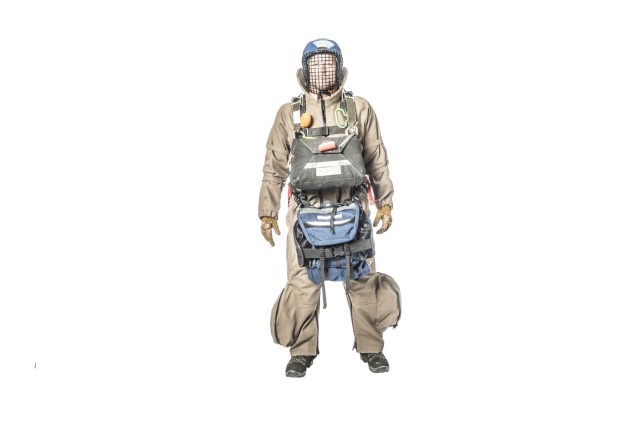
The effort is a perfect fit for DEVCOM SC’s expertise. “DEVCOM SC’s long-term expertise in developing clothing to meet Warfighter needs benefits this project in all aspects,” said Annette LaFleur, DPPT’s team leader.
“We not only look at the musculoskeletal structure and movement of the human body within the framework of a clothing item but how the necessary equipment works cohesively with the garment to enhance performance and mission success,” said Bigrig. “We listen to the user to find out what isn’t working and devise a solution.”
DPPT is adept at designing for function and specific occupational specialties — whether it be a protective ensemble for a fuel handler or bomb suit for an explosive ordnance disposal operator or a new rough terrain jumpsuit for smokejumpers. On a daily basis, the team works to meet the needs of Warfighters and other users by translating user requirements into tangible prototypes. The prototypes incorporate materials and features to meet the specific needs of the user. For the rough terrain jumpsuit, the prototype includes padding with the proper impact protection, as well as flame-retardant base materials.
“The team starts by sketching design options, discussing ideas with the user before drafting patterns and sewing the first prototype,” said LaFleur. “We design, test and validate, ensuring the item is user tested and approved. We don’t want the user to have to think about or be burdened by their clothing or gear. If they are solely focused on their mission, then we know we have done our job well.”
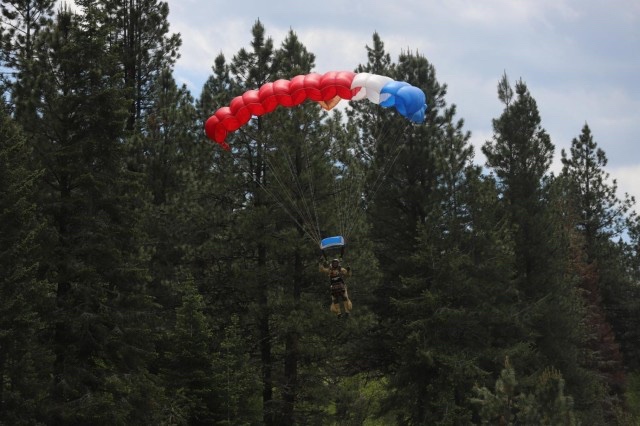
The rough terrain jumpsuit prototype includes improvements to features and materials.
“Due to the natural rough terrain in which these parachutists are entering, the current jumpsuit has a short field life,” said Bigrig. “The current jumpsuit is made from Kevlar, which has great puncture resistance but very low abrasion resistance. It quite frequently requires repair or replacement. Kevlar is sensitive to, and weakened by, exposure to sunlight, and this factor also plays into a shorter use expectancy. The goal of this new jumpsuit is to increase the durability, protection and extend the life of its use.”
Melynda Perry, a textile chemist on DEVCOM SC’s Textile Material Evaluation Team, ran tests on the current jumpsuit material and suggested some materials to be integrated into the new suit. The new suit includes two layers — a base layer and a higher abrasion resistant layer. The goal is to identify lighter weight materials with improved abrasion resistance that have lower amounts of aramid fibers to offer higher protection against UV exposure, extending the life of the jumpsuit.
The new jumpsuit prototype also features an improved collar and integrated impact resistant foam. It also includes an adjustable side pocket at the bottom of the jumpsuit trousers. The pocket is used to hold rope and other gear.
Bigrig conceived the idea for the adjustable pocket, and Chong Whitfield, a DPPT production designer, refined the idea. Being able to adjust pockets helps improve safety.
“It’s the Goldilocks pocket,” said Bigrig. “You can adjust it so that it is just right.”
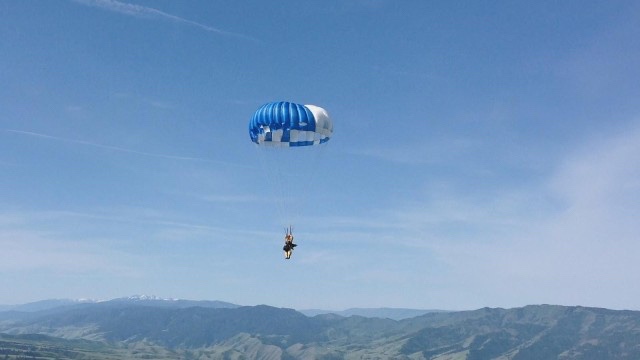
User input, which plays a key role in all of DEVCOM SC’s product development, is driving the design of the new jumpsuit.
“We had a lot of conversations with the smokejumpers and gleaned great information on how we could make this jumpsuit into something that would greatly improve on what they currently had,” said Bigrig. “It is a wonderful relationship because we adapted the design to the feedback we received.”
Prior to working with the DPPT, the smokejumpers already had a good working relationship with DEVCOM SC’s Air Drop Team, part of the Soldier Sustainment Directorate. This relationship led to the smokejumpers seeking out DPPT.
“We viewed videos of their donning and doffing process, deployment from the plane along with the five-point landing procedure,” said Bigrig. “We had a lot of conversations with the smokejumpers and gleaned great information on how we could make this jumpsuit into something that would greatly improve on what they currently had.”
Other DEVCOM SC teams were also involved in the effort. Bigrig explained that the DPPT has been leveraging the expertise of DEVCOM SC’s Ballistic and Blast Team’s Chuck Hewitt to test impact resistant materials to integrate into the suit. Perry has also been instrumental in testing and providing recommendations for best materials for the new jumpsuit.
“There are people here who are experts in their fields,” said Glover. “They are experts in design, textiles, blunt impact ballistics and parachutes. We are firefighters and smokejumpers first and working with these experts is really beneficial for us.”
Bigrig is proud to work with the smokejumpers on the new Rough Terrain Jumpsuit.
“The users are firefighters with a high degree of ingenuity, and we are honored to help them take the jumpsuit to the next level,” said Bigrig.
By Jane Benson, DEVCOM Soldier Center Public Affairs
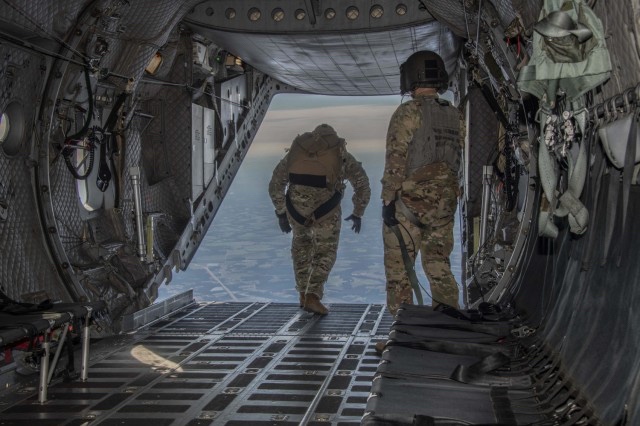
FORT BRAGG, North Carolina – Airborne equipment testers here are busy with Special Operations Soldiers testing the Army’s newest Enhanced Electronic Automatic Activation Device (EEAAD).
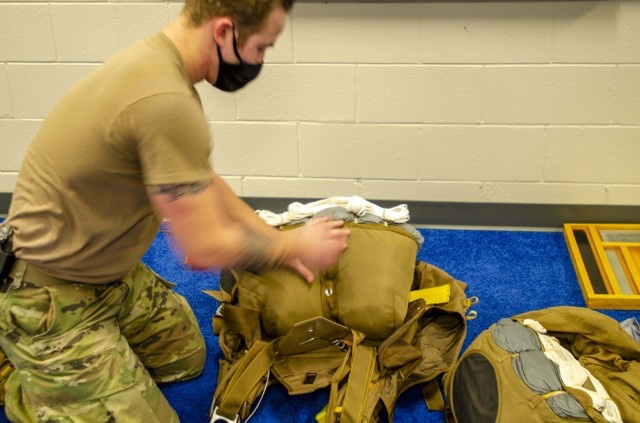
The Airborne and Special Operations Test Directorate (ABNSOTD) is gathering data from the operational user to support an Army-wide fielding decision to replace the aging reserve automatic activation device currently fielded to military free-fall (MFF) units.
“The EEAAD provides the capability of the rigger shop to download the data instantly, which is not provided by the currently fielded automated activation device,” said a Parachute Rigger with the U.S. Army Special Operations Command.
The ABNSOTD first completed risk reduction efforts for the EEAAD using only ABNSOTD test jumpers to ensure that the intended test item did not impose additional and unforeseen risks or hazards to the jumper before operational test jumps.
Operational testing started in the vertical wind tunnel.
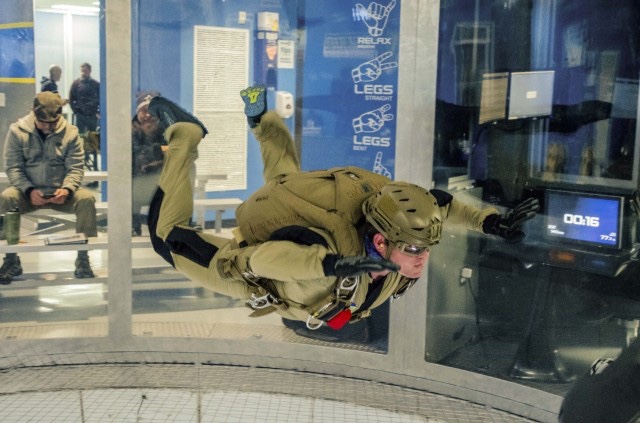
“This allowed the test team to observe the approach load system under simulated free-fall conditions being employed by a MFF qualified test jumper,” said James Cochran (JC), a seasoned Military Test Plans Analyst with the ABNSOTD.
“The ABNSOTD employed a host of risk reduction measures to ensure the potential test item was safe and effective from the intended user’s standpoint,” he said.
Operational Soldiers from USASOC finished testing with the RA-1 main parachute and reserve with the EEAAD installed by conducting MFF test jumps into the Laurinburg, North Carolina drop zone.
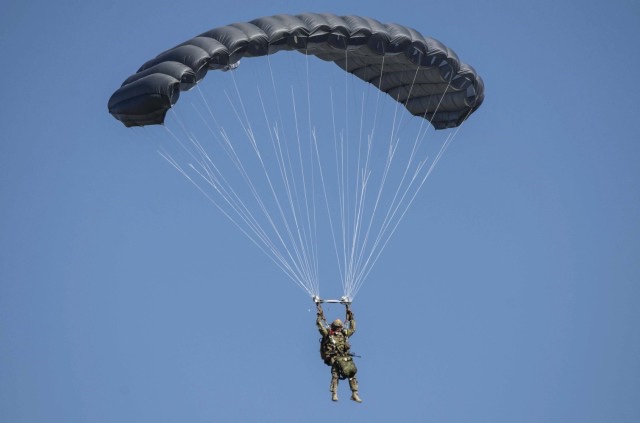
“The EEAAD will not only provide MFF operators with a next-generation reserve parachute activation device but will also facilitate after action reviews,” said Lt. Col Derek Johnson, Chief of ABNSOTD’s test division.
“The EEAAD will also support jump incident investigations by providing the ability to download and analyze flight data at the unit level,” he added.
The operational testing consisted of new user training and military free fall jumps followed by data collection of jump data, downloaded from the EEAAD.
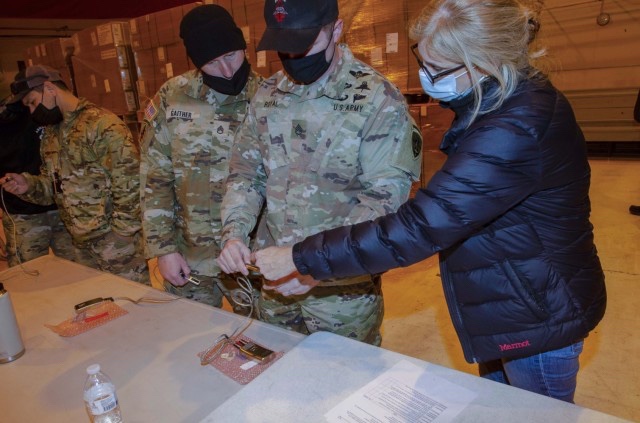
“The simplicity of the menus and setting provides more confidence to the jumper that the device will work as expected,” said one USASOC Operator.
By Mr. Richard Hedgecock, Military Test Plans Analyst, Airborne and Special Operations Test Directorate, U.S. Army Operational Test Command
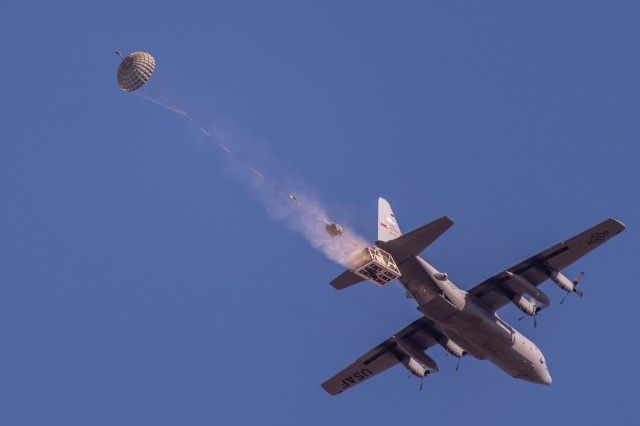
YUMA PROVING GROUND, Ariz. — For U.S. Army Soldiers on the move, getting a vehicle in the field increases their survivability and mobility. Safely airdropping the vehicle and quickly de-rigging it is important to reduce Soldiers’ exposure to threats. As a measure to increase operational readiness, the Army recently tested the ATAX land airdrop system, an off-the shelf prototype.
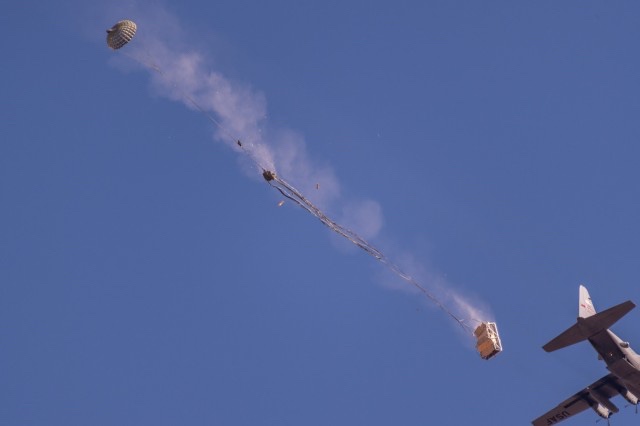
The Foreign Technology Assessment Support program provided funding that enabled the U.S. Army Combat Capabilities Development Command, or DEVCOM, Soldier Center to test the ATAX system, manufactured by United Kingdom-based IrvinGQ. The system was originally designed for British and NATO standards, which are similar to the U.S. but not identical.
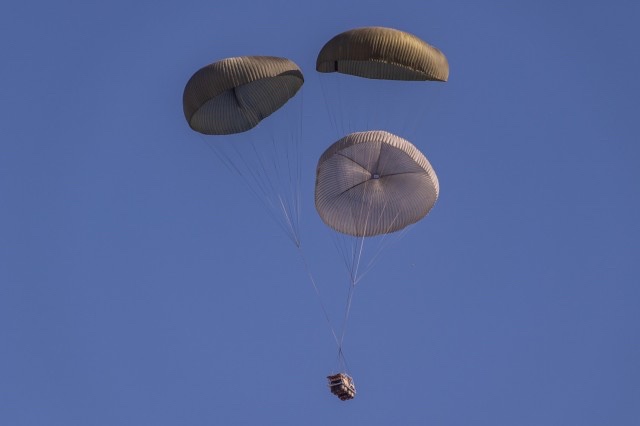
The funding enabled the DEVCOM team to ensure it meets U.S. airdrop and air transportation specifications and to address any issues gathered during the testing. A follow-on Foreign Comparative Testing program, sponsored by the Office of the Secretary of Defense Comparative Technology Office, enabled detailed integration, prototype fabrication and additional airdrop flight testing.

The U.S. Army Yuma Test Center conducted four live airdrop tests between November 2020 and May 2021. The team used ballast weight for the first three airdrop tests and a High-Mobility Multipurpose Wheeled Vehicle for the fourth and last airdrop test, which they drove off the ATAX platform at the conclusion of the test.

“Overall, the project was a success. At the final demonstration, we derigged the HMMWV and drove it off the platform without any issues,” said Sean Wellman, DEVCOM SC engineer and ATAX project lead.
The ATAX airdrop system is modular and consists of eight-foot platforms connected by hinges. It can be adapted to different lengths, typically between 8 and 32 feet, and it is surrounded by a self-contained structure where the parachutes are mounted and attached. The vehicle is loaded onto the ATAX platform with an under-mounted airbag system. In a typical low altitude airdrop, it takes between two to three minutes for the vehicle to drop from a height of 1,500-2,000 feet. Airdrop systems can weigh up to 42,000 pounds including the payload and airdrop equipment.
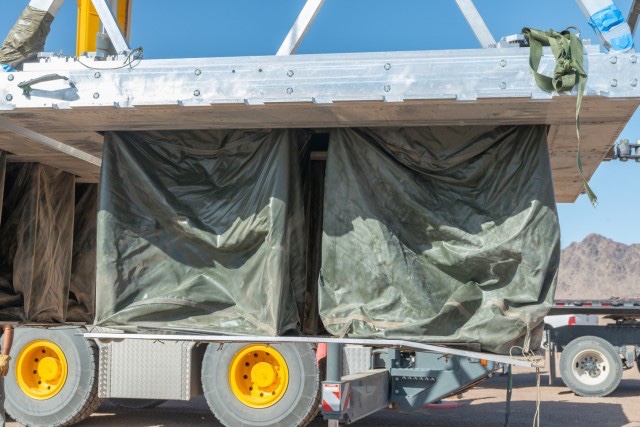
The ATAX airdrop system has significant advantages over traditional systems because it uses reusable airbags to soften the impact when the vehicle lands. Traditional airdrop systems use multiple layers of stacked paper honeycomb that is three inches thick to soften the landing. The paper honeycomb, which is crushed by the impact, is left in the field and can take up to an hour or more for Soldiers to free the vehicle from the paper honeycomb. One of the goals of the project is to reduce de-rigging time by 75 to 80 percent, which will reduce the amount of time that Soldiers are in the drop zone.
“Airbags minimize or avoid the need for paper honeycomb, saving time during preparation and recovery. The risk of becoming stuck in a stack of honeycomb is eliminated when airbags are used. Basically, when the vehicle is dropped, everything comes off, and the vehicle is ready to execute the mission,” Wellman said.
DEVCOM SC teamed with Product Manager Force Sustainment Systems on the FTAS and FCT project. PM FSS is executing the Rapid Rigging and Derigging Airdrop System Program of Record, which will enable wheeled vehicles to drive on and off the aerial delivery platform, decreasing the amount of time Soldiers are in the drop zone. Funding provided by the FCT program enabled the Army to maintain competition that would otherwise have not been possible. The FCT program provides funding to acquire, test and evaluate mature products from foreign industry that might fill a capability gap or satisfy an urgent need.
DEVCOM SC established a Cooperative Research and Development Agreement with IrvinGQ in 2018, to share information about the ATAX system and other aerial delivery technology. DEVCOM is leveraging the CRADA for other projects that support its mission. According to IrvinGQ, numerous European forces are using the ATAX system.
“Ultimately, the ATAX system was not selected for further development but it was a key enabler for modernization efforts in aerial delivery. The ATAX is still available as a test bed for future science and technology projects, if needed,” said Andrew Meloni, lead of the DEVCOM SC Airdrop Research, Capabilities & Systems team.
By Argie Sarantinos, DEVCOM Public Affairs
POPE ARMY AIRFIELD, North Carolina —
Women’s History Month is in March and there is nobody reflective of being a role model for other women than U.S. Air Force Capt. Ricki Sidorov.
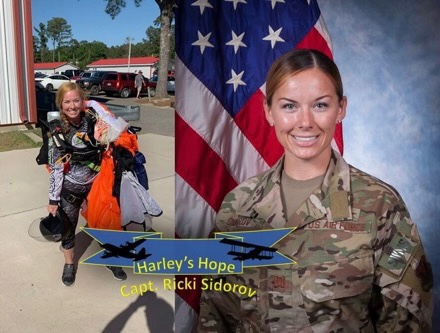
First impressions aren’t always accurate, but when meeting her, there is a bubbly, positive, go-getter attitude who can, and will, get things done. Hardly what you’d expect from someone who nearly lost her life in a skydiving accident in less than two years ago. In this case, though, what you see is what you get.
The San Bernardino, California, native is the Special Warfare Mission Support flight commander for the 818th Operations Support Squadron, primarily responsible for, well, pretty much everything: projects, building maintenance, combat arms, supply, and vehicle maintenance, just to name a few. She also leads 11 Airmen, one civilian, and four contractors.
Prior to joining the Air Force, Sidorov spent six years in the U.S. Army in expeditionary communications. After returning from a deployment in Afghanistan, she decided to leave the military and devote time to working towards a college degree. In typical fashion, she not only earned a bachelor’s degree, but kept going for a master’s.
It was then that she realized how much she missed serving her country and opted to join the Air Force. Sidorov’s job isn’t much different from her position in the Army, but the Air Force has allowed her to have more unique assignments, such as serving in the Combined Air and Space Operations Center in Qatar and the Expeditionary Communications Squadron.
She finds her job humbling and rewarding. “I work with many talented individuals who passionately serve their country, and I continually learn from them,” Sidorov said. That attitude keeps her going, as she plans to remain in the Air Force, traveling the world while continuing to learn and grow.
Someone with these traits isn’t just born with them. She has drawn most from U.S. Air Force Col. Michelle Carns. “She is the epitome of a strong and caring leader. While in Qatar, our team in the Combat Plans Division was a family. It didn’t matter that everyone was from different career fields or branches of service. We were united in our mission and every month we had a team night to relax, eat and highlight the member of the month. Magical things happen when you bring people and food together.”
Sidorov is always the planner. The doer. Constantly trying to learn from others and lead with professionalism and class. That was all paused – and almost stopped completely – during her 2020 skydiving malfunction. As one of her favorite hobbies, she had made over 50 successful jumps without incident and had just finished her Class B license course a few months before.
On this day, she experienced a high-speed parachute malfunction, falling between 70-90 mph – spinning so fast that she blacked out. At 900 feet, the automatic activation device was triggered, releasing her reserve parachute. Within seconds, her main canopy partially collapsed her reserve parachute. If there was a positive, besides the fact she survived, she landed in someone’s back yard with ground that had been freshly tilled and was the softest it had ever been.
She sustained two collapsed lungs, a fractured scapula, knee ligament tears, and internal swelling that required surgery while spending 11 days in the hospital. Not surprisingly, she returned to work just a month after being released from the hospital.
While most would swear off skydiving after that, Sidorov was back at it six months later. “We all face challenges in life,” she said. “You can’t prevent it, but you can have a positive mindset as you overcome those challenges. It doesn’t matter how hard you fall, as long as you get up and keep going.”
There isn’t a better example of that than Capt. Ricki Sidorov.
By Lori Dean